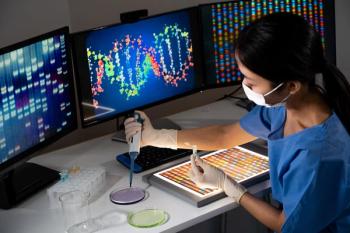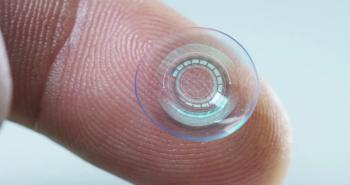
This week in optometry: March 10-March 16
A look back on what happened in optometry during the week of March 10-March 16.
Catch up with what Optometry Times®' shared this week:
Optometry news
Supporting glaucoma patients beyond the exam room
By Ben Casella, OD, FAAO
Some of the most difficult questions I’ve ever been tasked with have been posed by people who were not in the eye care arena. A perfect example is the time I spoke to my niece’s kindergarten class a number of years back. I thought I’d just bring in a light and a prism and dazzle some youngsters for a few minutes. Instead, I spent several sweaty moments trying to answer questions like, “How do we see people we know and know that we know them?” And, “When I look at the sky, I see all different colors; why is that?” I’ve avoided addressing a roomful of children ever since.
Long before the folly of that day, when I was a resident at SUNY, I was asked to go down to the lobby of our building and lead a discussion for a glaucoma support group. It was a small coterie, maybe 10 or 12 people, and to my surprise not all glaucoma patients as I had expected. Instead, they were mostly relatives of glaucoma patients. The session lasted a half an hour or so, and it was—I hope—informational for the participants.
Artificial tear ingredients that mimic the real thing
By Cecelia Koetting, OD, FAAO
Optimally, artificial tears should be just like natural tears, with aqueous, mucin, and lipid layers functioning together to keep the ocular surface healthy and hydrated. But artificial tears are artificial, with ingredients that aren’t produced by the human body. How can we ensure that patients who need these products get the hydration and protection they need? By looking for ingredients that mimic nature and avoiding the ones that work against it.
Environment, lifestyle play role in AMD disease development
By David Hutton
A Canadian study1 published in the journal Science elucidates a new molecular mechanism that may cause age-related macular degeneration (AMD).
The research at Hôpital Maisonneuve-Rosement, in Montreal, shows how life stressors such as obesity reprogram immune system cells and make them destructive to the eye as it ages.
“We wanted to know why some [individuals] with a genetic predisposition develop AMD, while others are spared,” Przemyslaw (Mike) Sapieha, PhD, an ophthalmology professor at the Université de Montréal, said in a statement. “Although considerable effort has been invested in understanding the genes responsible for AMD, variations and mutations in susceptibility genes only increase the risk of developing the disease but do not cause it.”1
My practice journey
By Shane Swatts, OD
Whether you’re a recent graduate or have been practicing for 20-plus years, it’s not difficult to see that dry eye disease (DED) is one of, if not the, most prevalent condition affecting our patients today. Essentially, it is its own epidemic—49 million Americans with dry eyes is a pretty big deal.1 The days of simply adjusting medication regimens and putting “Band-Aids” on a chronic condition have long passed. Although DED is nothing new, our understanding of its intricacies and how we approach treatment have changed drastically over time.
Exhausted with the seemingly never-ending cycle of prescription, follow-up, medication adjustment, follow-up, new medication addition, follow-up, and so on—all while my patients were suffering, frustrated, and searching for something more than a temporary fix—we (myself and my lifelong partner, Dr Leah Ramos) decided to go all in on hitting dry eye at its core. In doing so, we removed ourselves from primary care and dedicated close to half of our office space specifically to the diagnosis and treatment
of DED as a step toward addressing this massive need.
Optical Lab Software Solutions becomes Rx-Universe in global rebranding
By Emily Kaiser, Assistant Managing Editor
Optical Lab Software Solutions is rebranding to Rx-Universe as they forge into the future of optical lab technology. The global rebrand reflects the company’s reputation as a trailblazer in the laboratory management system (LMS) technology. The new branding for Rx-Universe will debut at Vision Expo East in New York City from March 16-19, 2023.
“We are thrilled to rebrand as Rx-Universe. We believe it’s the perfect time to establish Rx-Universe as the leader in LMS technology, and reconfirm our strong commitment to our customers for delivering innovative solutions and expert care,” Jodi Nickerson, senior director of sales and marketing at Rx-Universe, said in a press release. “This rebrand is so much more than a name change and new logo. It’s a reflection of who we’ve been, yet sends a clear message that Rx-Universe is the brand we are taking into the future, and the brand labs can trust.”
Practical management EP 8: First steps to increase net revenue
By Maria Sampalis, OD; Kassi Jackson, Editor
Maria Sampalis, OD, owner of Sampalis Eye Care in Cranston and Providence, Rhode Island, sat down with Optometry Times®' editor Kassi Jackson to talk first steps to get started in increasing net revenue in your practice.
Newsletter
Want more insights like this? Subscribe to Optometry Times and get clinical pearls and practice tips delivered straight to your inbox.















































